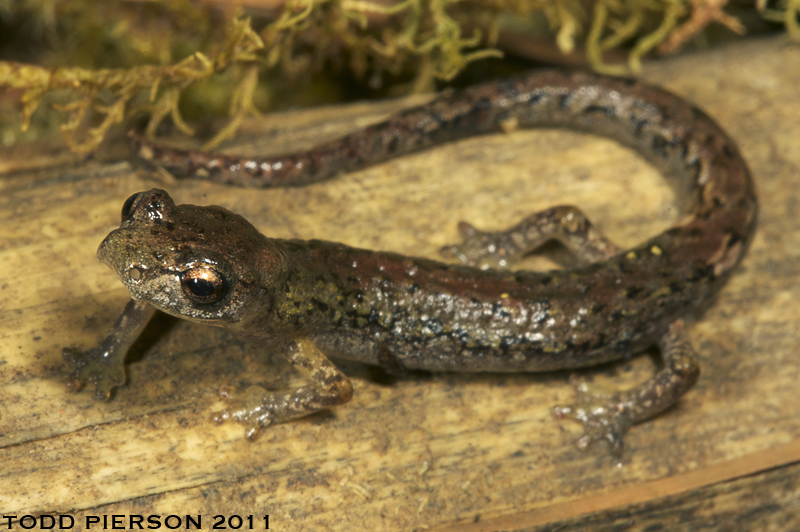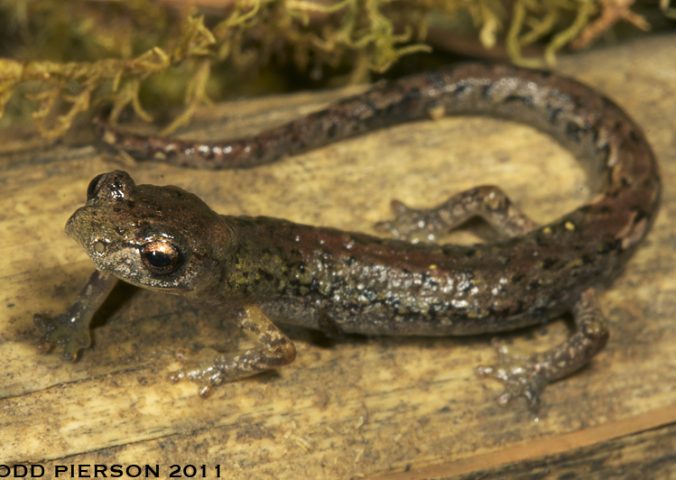About
Dendrotriton chujorum is a Critically Endangered bromeliad salamander that is endemic to Guatemala, found in the northern regions of the Sierra de los Cuchumatanes.
This is a lungless species of salamander that possesses a slender body, long tail and prominent eyes. They inhabit high-elevation forests with high humidity.
This species is part of the Plethodontidae, the largest salamander family, comprising almost two thirds of all known species. They are thought to have diverged from all other amphibian species over 100 million years ago, in the Early Cretaceous. They are as distantly related to all other amphibian lineages as humans are to elephants, and emerged when dinosaurs still roamed the Earth!
The genus Dendrotriton is believed to have diverged from all other plethodontids more than 40 million years ago, several millions of years before humans last shared a common ancestor with capuchins and tamarins.
This species is under threat due to their habitat becoming degraded, primarily by small-holder farming, timber and firewood harvest by local people. The community of San Mateo Ixtatán owns a patch of forest where this species is found, and community authorities are currently interested in the preservation of this area.
There is an ongoing project focusing on the threatened amphibians of Guatemala spearheaded by Toledo Zoo and University of California at Berkeley, with the participation of the Museum of Natural History of the University of San Carlos. The Museum and non-governmental organization FUNDAECO are seeking to promote the inclusion of the site into a System of Conservation Areas in the north of Huehuetenango. Preservation of the only known remaining habitat is a priority for this salamander’s conservation.
- Order: Caudata
- Family: Plethodontidae
- Population: Common
- Trend: stable
- Size: 31mm
EDGE Score
Distribution
This species occurs in the northern region of the Sierra de los Cuchumatanes, Guatemala, ranging from 2,652 to 2,799 metres above sea level.
Habitat and Ecology
This species occurs on mountain slopes covered by small remnants of primarily hardwood forest, which is drier than forest at higher elevations. Individuals can be found in bromeliads 3-10 metres above the ground.

